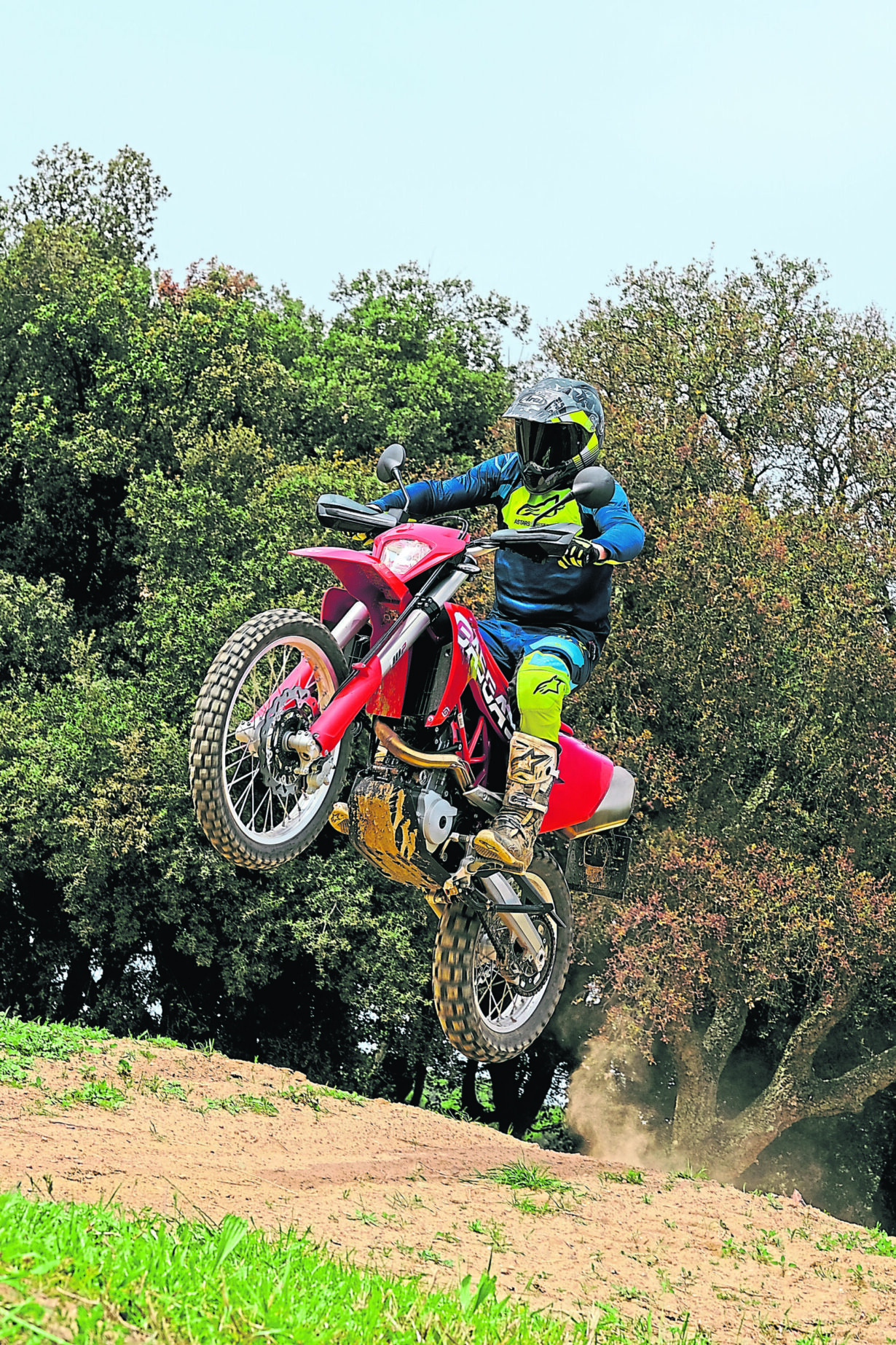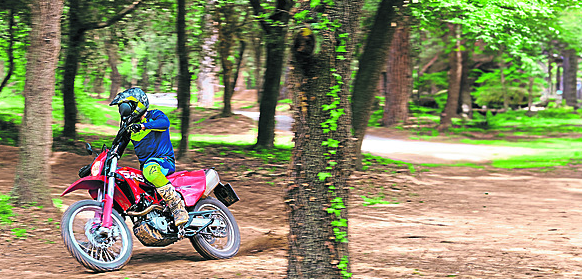Big trail bikes were everywhere 30 years ago. Honda’s XR, Kawasaki’s KLR and Suzuki’s DR snapped up sales left, right and centre, offering just the right balance of off-road prowess and usable road manners. But if you like your bikes rugged and a little bit raucous, there are only a handful of options that fit the bill. Bruce Wilson introduces one of them.
In my mind, you have enduro bikes and adventure bikes. The former slot into that zone of up to 450cc, typically with a single cylinder at their heart, and are so slim they make a size zero model look a bit fat. On the other side of the fence are meaty adventures bikes, packed full of curves, several cylinders, and a load of tech and luxuries you don’t normally find on enduro bikes. It’s fair to say I like to put bikes in boxes, and more often than not there’s a slot for everything, but every now and again there’s a conundrum on the cards, which is probably the best way to describe the GasGas ES700. The thing is, it’s a good problem to have because it pretty much blurs the lines between both aforementioned genres, offering the best of both worlds.

At its heart is a 692cc single cylinder motor pumping out an arm-wrenching 72bhp. It features a tubular steel trellis frame and the kind of suspension that can tackle trails as well as tracks. Its wheels are spoked and its tank is just 13.5 litres large. From these few facts alone, you’d come to think this thing is nothing short of an overgrown enduro – and you wouldn’t be far from the mark. The first time I rode this bike was out in Spain, testing it around a largely MX-style venue, complete with deep sand, berms, jumps and enough ruts to shake your false teeth out. It was a lively debut that gave me a first-hand account of its potency. I’ll be honest, it scared me, proving ferocious with its pick-up, but as time went by I came to love the urgency of the single cylinder’s delivery, which is beyond torquey. Just looking at the bike’s ride-by-wire throttle would induce endless rear wheel drifts, but with time I came to love its energy and respect the bike for the beast it is. On a pure dirt track, it is perhaps a bit too much for the likes of myself: it’s not just extremely powerful, but also a little on the weighty side. That means when things get a little wayward, the ES can be a handful to rein in, unlike a lightweight enduro. It hits the scales at 146kg (dry), which I felt wholesale when getting this bike airborne. I had to plan my take-offs carefully, knowing that too much gas would send the front wheel to the moon, while too little throttle would cause it to nosedive like a good ’un. For me, it was something of a balancing act. In better hands you’d be reading a wholly different story, but my message to you is that it most certainly can cope on a pukka off-road motorcross track, but that’s maybe not where the best of the bike is found.

Fast-forward a few months and the chance came to put it through its paces in the UK, this time armed with a bike-carved trail through dense woodland, tree roots, and a mixed bag of undulations. There were climbs, dips and tight turns to navigate, with branches so close they’d poke your eyes out if you even considered off-piste.
In essence, it had an adventure-themed ambience, being as challenging as it was narrow throughout its mile-long route Initially, the thought of the ES around it made me question GasGas’s sanity – surely this thing was too big and too savage for such antics? How wrong I was.
What hit me first was how well the bike rolled over the debris on the ground. Its weight actually worked in its favour, maintaining momentum and carrying effortlessly over roots and ruts without cause for concern, made all the sweeter by the absorbent WP XPLOR suspension that mopped up whatever came our way.
I’ve ridden loads of big adventure bikes through such conditions, but few can hold a candle to the way the ES carved its way around. The thing I liked about it was the ability to slide all the way forward on the long, firm saddle, as you would on an enduro. Up at the headstock, the bike is surprisingly narrow, which means you can get over the nose of the thing and keep your weight over the front wheel, helping no end in the traction and turning departments. As for the rear end, it’s better just to accept that this bike likes to light up the ground. A steady hand is the order of the day if you want to keep your wheels in line – and to make sure that’s the case, you can indulge in the bike’s traction control system that takes the sting out of the thing. There are also adjustable power modes if things are really treacherous. I found myself leaning on the tech for certain sections, but removing it at others when I wanted to get the rear wheel kicking out.

The slower the bend, the more progressive the slide and the easier it is to catch if your brain goes into panic mode, but I never really felt too concerned by its wayward demeanour. The more I got used to the single, the more I became aware of its versatility and usability, made all the better by its clinical throttle connection.
Another piece of tech that came into its own was the ABS. I’m not normally a fan of such systems, especially off-road, but in really loose zones the tech undoubtedly stopped me from washing the front at the price of running a little deep. It wasn’t perfect, or wholeheartedly predictable either, but I was grateful for its presence.
That’s how I feel about the bike as a whole. It’s not the best adventure bike out there, or the best enduro, but it’s a great middleground option… the kind of bike you can kit up comfortably with everything but the kitchen sink and then tackle trails to your heart’s content.
It’s a mile-muncher, but with the kind of pep and usability that’s harder to find on bigger machines. It’s an inbetweener – and there’s zero wrong with that.


